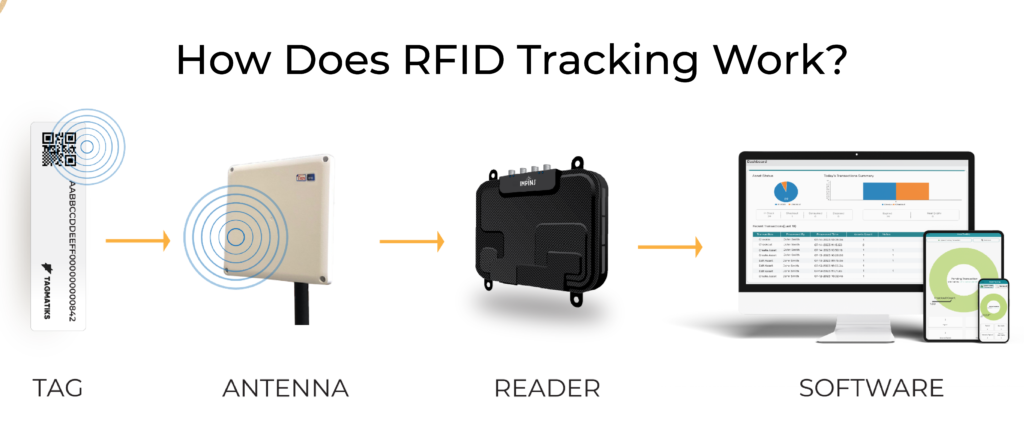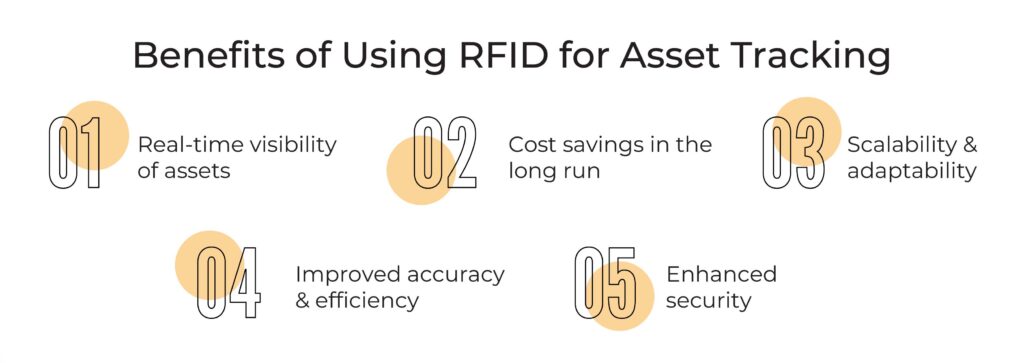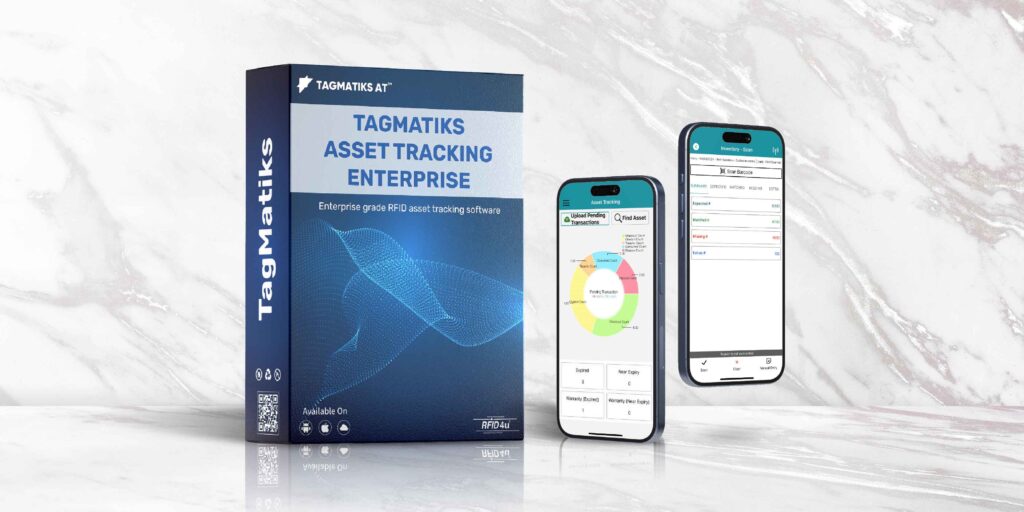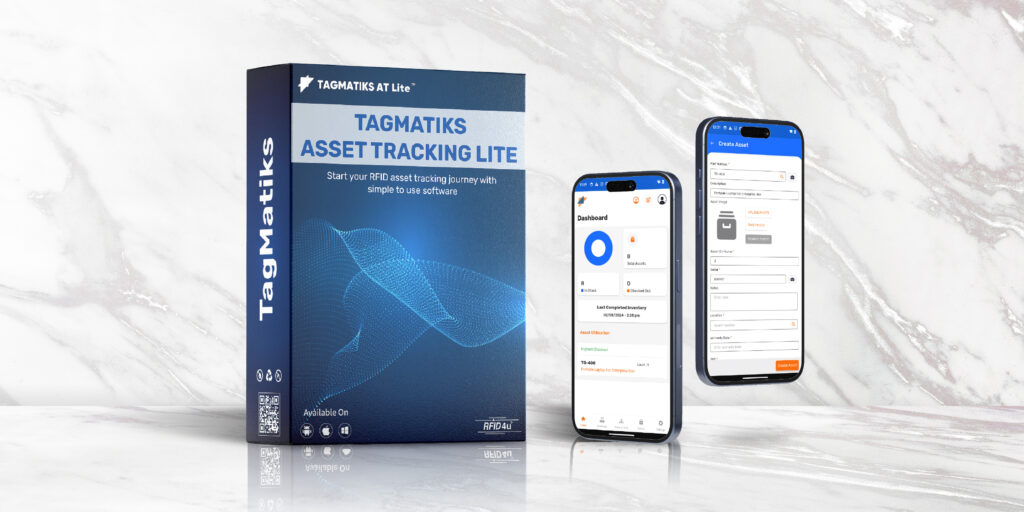Imagine a world where you always know exactly where your critical assets are—no more frantic searches, no more costly losses, just seamless, real-time visibility. That’s the power of RFID asset tracking, and in 2025, it’s not just a futuristic ideal, it’s a business imperative. From streamlining complex supply chains to securing valuable equipment, knowing the precise location and status of your assets is no longer a luxury, it’s the key to staying competitive.
While RFID technology has been around for a while, the convergence of automation, the Internet of Things, and advanced data analytics is creating a perfect storm, propelling RFID asset tracking to the forefront of modern business practices. This article explores why 2025 is the year RFID asset tracking becomes essential, examining its transformative benefits and how it’s reshaping industries.
What is RFID Asset Tracking?
RFID asset tracking is a method of monitoring and managing physical assets using RFID technology. It involves attaching small devices called RFID tags to items. These tags store information about the asset, which can be wirelessly read by RFID readers. The data collected helps businesses track the location, status, and movement of their assets in real time.
Radio Frequency Identification
RFID Tags: Small devices, often adhesive labels or embedded chips, that store data electronically. They attach to or embed within assets, carrying unique identification numbers and other relevant information.
RFID Readers: Devices that use radio waves to communicate with RFID tags. They send out signals to activate tags and retrieve the stored information, acting as the data collection point.
Antenna: A component that enables communication between RFID tags and readers. It transmits and receives radio waves, extending the reader’s range and facilitating data exchange.
RFID Software: The RFID software that manages and interprets the data collected by the RFID readers. It often integrates with existing systems, providing a user interface for tracking, reporting, and analysis.
RFID vs. Other Tracking Methods
RFID vs. Barcodes: Unlike barcodes, RFID tags don’t require a direct line of sight to be scanned. This means you can track multiple items simultaneously and even through obstacles like boxes or walls.
RFID vs. GPS: GPS is excellent for tracking assets over long distances, especially outdoors. However, RFID is more suitable for indoor environments like warehouses or hospitals, offering precise, real-time location tracking without relying on satellite signals. Also, RFID is more cost-effective.
How Does RFID Tracking Work?
Let’s break down how RFID tracking works, step by step:

1. Tagging Assets: An RFID tag is attached to the asset you want to track. These tags come in various forms (labels, embedded chips, etc.) and store a unique identification number, along with other relevant data like the asset’s type, location, or maintenance history.
2. Reader Emits Radio Waves: An RFID reader, which can be handheld or stationary, emits radio waves.
3. Tag Responds: When the radio waves from the reader reach an RFID tag, the tag’s antenna picks up the signal. Passive tags use the reader’s energy to power themselves, while active tags use their own battery.
4. Data Transmission: The tag responds by transmitting its stored information back to the reader using radio waves.
5. Reader Captures Data: The reader receives the data from the tag, including the unique ID and any other information stored on it.
6. Data Sent to System: The reader then sends this captured data to a central system, typically a computer or a cloud-based platform.
7. Software Processes Data: The software system processes the data, which may include decoding the ID, updating the asset’s location, and recording other relevant information.
8. Real-Time Visibility: The system provides real-time visibility into the location and status of the tagged assets, which can be accessed through a user interface or integrated with other systems. This allows users to track inventory, manage assets, and make informed decisions based on up-to-the-minute information.
Benefits of Using RFID for Asset Tracking

1. Real-Time Visibility of Assets
RFID provides instant, up-to-the-minute tracking of your assets, no matter where they are. Imagine knowing the precise location of every piece of equipment in your warehouse or every critical medical device in your hospital, all accessible at the click of a button. This real-time visibility empowers you to make informed decisions quickly and efficiently.
2. Improved Accuracy and Efficiency
Manual tracking methods are prone to human error. RFID automates data collection, significantly improving accuracy.
Error-Free Data Collection: RFID ensures that data is collected accurately, avoiding mistakes caused by manual input. This is particularly crucial in industries like healthcare and manufacturing, where errors can have significant repercussions.
Streamlined Inventory Management: Traditional inventory checks are time-consuming and labor-intensive. With RFID, businesses can scan hundreds of items simultaneously without needing direct line-of-sight, drastically reducing the time spent on inventory counts.
Efficient Resource Allocation: Automation frees up employees to focus on more valuable tasks rather than tedious manual tracking, boosting overall productivity.
3. Cost Savings in the Long Run
While the initial investment in RFID technology may seem high, it pays off over time.
Minimized Losses: RFID technology helps reduce the risk of asset theft or misplacement by providing continuous monitoring. For instance, businesses can track valuable equipment in real-time, ensuring it remains secure and accounted for.
Reduced Labor Costs: Automating asset tracking eliminates the need for manual labor-intensive checks, saving both time and money. Employees no longer have to spend hours searching for misplaced items, performing inventory counts, or manually recording data.
Lower Maintenance Costs: RFID systems are durable and built to last, requiring minimal upkeep over time. As a result, businesses experience fewer disruptions and lower operational costs.
4. Scalability and Adaptability
Built for Growth: RFID systems can expand as your business grows. Whether you’re operating a small retail shop or a global enterprise with complex supply chains, RFID can be customized to fit your specific requirements.
Industry Customization: Healthcare, logistics, manufacturing, and even construction industries can adapt RFID systems to their unique environments.
5. Enhanced Security
RFID doesn’t just track assets—it also enhances security.
Monitoring Sensitive Items: RFID is ideal for tracking assets that require extra protection, such as confidential documents, expensive machinery, or pharmaceuticals. Businesses can monitor these items continuously and restrict access to authorized personnel.
Preventing Unauthorized Access: RFID systems can be configured to send alerts if an asset is moved to an unauthorized location or accessed by an unapproved individual. This proactive approach reduces the risk of theft, tampering, or accidental loss.
Key Industries Leveraging RFID Asset Tracking in 2025
Healthcare: In healthcare, RFID asset tracking in healthcare is revolutionizing how hospitals manage critical resources. RFID enables real-time tracking of medical equipment, from expensive MRI machines to smaller but essential items like infusion pumps, ensuring they’re readily available when needed. It also plays a crucial role in securely managing patient files and ensuring the safe handling of pharmaceuticals, enhancing patient safety and regulatory compliance.
Retail: RFID in retail is transforming inventory management. By tagging items with RFID tags, retailers can gain real-time visibility into their stock levels, reducing stockouts and overstocking. This improved inventory accuracy leads to better demand forecasting, optimized shelf placement, and ultimately, enhanced customer satisfaction through efficient order fulfillment and product availability.
Logistics: RFID in logistics and supply chain operations is streamlining the movement of goods from origin to destination. RFID tags attached to shipments allow for real-time monitoring, optimizing warehouse management by quickly locating items and facilitating efficient picking and packing processes. This leads to reduced delivery errors, improved transit times, and increased supply chain visibility.
Manufacturing: RFID asset tracking in manufacturing is essential for optimizing production processes. RFID tags on tools, machinery, and raw materials provide real-time insights into their location and usage. This allows manufacturers to better manage maintenance schedules, prevent equipment downtime, and ensure that materials are readily available for production, leading to increased efficiency and reduced costs.
Construction: In construction, managing heavy equipment, tools, and on-site materials is crucial for staying on schedule and within budget.
Emergency Medical Services (EMS): RFID asset tracking in EMS is critical for managing essential medical equipment and supplies. In emergency situations, knowing the precise location of equipment like defibrillators, oxygen tanks, and trauma kits can be life-saving. RFID enables EMS providers to quickly locate and deploy necessary resources, improving response times and enhancing the quality of care.
Technological Advancements in RFID in 2025
Integration with IoT (Internet of Things)
RFID is now working hand-in-hand with IoT, enabling seamless data sharing between devices. This leads to smarter automation, predictive maintenance, and real-time monitoring across industries.
Better Energy Efficiency and Durability
Advances in RFID tag materials and battery technology mean longer-lasting, more durable tags. Active tags now offer extended battery life, making them more reliable in harsh environments.
AI-Powered Analytics
Artificial Intelligence (AI) can analyze RFID data to predict asset maintenance needs, optimize inventory levels, and support smarter business decisions.
Recommended RFID Software for Asset Tracking According to Business Needs:
RFID technology continues to gain traction, offering solutions tailored to various business needs. Two notable RFID software solutions for 2025 are TagMatiks AT and TagMatiks AT Lite.
TagMatiks AT is a comprehensive RFID asset tracking platform designed for large-scale operations. It leverages advanced RFID technology to enhance asset visibility and management throughout the entire lifecycle—from acquisition to disposal. Key features include:
Cloud-Based Solution: This platform operates in the cloud, allowing for real-time data access and management from anywhere.
Lifecycle Management: TagMatiks AT tracks assets through their full lifecycle, including maintenance and compliance audits, ensuring that organizations can efficiently manage their resources.
Enterprise Features: The software supports extensive APIs for seamless integration with other enterprise tools and systems, making it suitable for larger organizations that require robust connectivity.
Scalability: It can accommodate a wide range of RFID devices, including handheld scanners and fixed readers, making it adaptable to various operational needs.
Analytics and Reporting: TagMatiks AT includes powerful analytical tools and customizable reporting options, enabling businesses to make informed decisions based on real-time data insights.
For smaller businesses or those new to RFID technology, TagMatiks AT Lite offers a simplified, cost-effective entry point. This solution is particularly beneficial for organizations that need real-time asset tracking without the complexity of larger systems. Notable features include:
User-Friendly Application: Available on iOS, Android, and Windows platforms, TagMatiks AT Lite is designed for ease of use with minimal IT skills required for setup.
Free Trial Option: Businesses can start using the software for free with the ability to track up to 99 assets, providing an opportunity to test its capabilities before committing to a larger investment.
Real-Time Tracking: The software provides immediate visibility into asset locations and statuses, which is crucial for effective asset management.
Flexible Asset Tracking: It supports a variety of asset types—from tools and equipment to IT assets—making it versatile across different industries such as manufacturing, healthcare, and logistics.
Why RFID is Essential in 2025
RFID’s rise in 2025 is driven by several converging factors. The increasing demand for efficiency across industries necessitates greater automation to cut costs and boost productivity. Businesses now rely heavily on real-time data for quick, informed decision-making, a need that RFID fulfills perfectly. While the initial investment in RFID might seem significant, the long-term benefits, including reduced losses, improved efficiency, and lower labor costs, make it a cost-effective solution.
Finally, in a rapidly evolving technological landscape, adopting future-proof technologies like RFID is crucial for staying competitive, supporting growth, and fostering flexibility and innovation within organizations.
Conclusion
RFID asset tracking isn’t just a trend—it’s a strategic investment for businesses looking to stay competitive in 2025 and beyond. With real-time visibility, improved accuracy, cost savings, and scalability, RFID helps industries operate smarter and more efficiently.
Ready to streamline your asset management? Explore RFID solutions tailored to your business needs and take the next step toward a more efficient future.
FAQs About RFID Asset Tracking in 2025
What is RFID asset tracking?
How does RFID work for asset tracking?
What are the main types of RFID tags?
- Active RFID Tags: Battery-powered and suitable for tracking assets over long distances.
- Passive RFID Tags: No battery, activated by the reader’s signal, ideal for short-range tracking.
- Semi-Passive (Battery-Assisted) Tags: Have a battery to power the chip but rely on the reader for communication, offering better range than passive tags.


